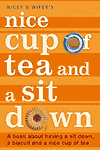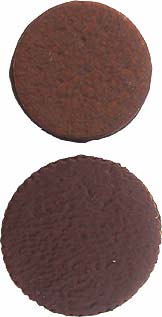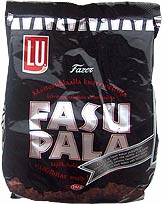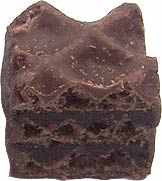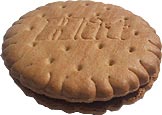| We don't shy away from the really controversial issues on NiceCupOfTeaAndASitDown and just when it looked like the whole 'Have Wagon Wheels got smaller' thing was about die a natural and dignified death, we un-earthed our packet of Australian Wagon Wheels. Made by Weston's and with a direct blood line to our own Burton's Wagon Wheel, you may be shocked at what we found. Well not shocked, maybe just mildly surprised.
There once was a mighty biscuit baron called Garfield Weston. An entrepreneurial Canadian, he made a fortune out of supplying biscuits to the forces during the war and had a facility in Slough. Mr Weston had three sons. One son inherited the UK business, one had the Canadian, and the other Weston got Australia. Which is why in each country one can find the Wagon Wheel, that ground breaking biscuit from the 1950s. Reputed to be the brain child of Garry Weston, the UK son, they were originally sold in the UK as Weston's Wagon Wheels.
Compared to our Wagon Wheels a few striking differences are apparent (Pictured along side the UK version is at the top). The first is that these Australian Wagon Wheels are fitted with Jam as standard. The Jam is quite retro compared to the leading edge stuff in our own jammy version of the Wagon Wheel, lacking as it does glucose, glycerol and something else, I forget now. Additionally our Wagon Wheels feature simulated 'Raspberry Jam', made of course from plums. Its antipodean cousin uses apples and plums and is quite happy to use the broader moniker of 'Jam'. Also its placement is different as we'll expand on a little more in a minute.
The infamous crimped edge, casualty of the move from Slough to Llantarnam South Wales, is still here like some living fossil, an echo of a distant age of giant biscuits. As I regard its whimsical form I feel possibly like that bloke Doug McClure played in the 'Land that Time Forgot' when the Pterodactyl is going for him. Or maybe Bob Hoskins in the recent TV adaption of Conan Doyles 'The Lost World', again when the slightly more convincing, less rubbery towed on a wire Pterodactyls are going for him.
And now to the truly shocking bit. The Antipodean biscuit is packing an impressive diameter of 88mm, thats a whole 14mm bigger than our version. However the plucky Brit comes right back at its foreign cousin with a depth of approximately 15mm compared to 11mm. In fact the Aussie Wagon Wheel has some of the thinest mallow I've ever witnessed. The engineering required to produce mallow at these remarkable tolerances surely has to be a credit to Australian ingenuity. I'm sure if NASA had to produce some sort of super thin mallow based biscuit for use in space, as say a solar sail then they would be down to Oz like a shot.
The Westons Wagon Wheel lacks the deep gully round its edge familiar to us. Perhaps this goes some way to explaining its approximately 20% greater mass compared to own Wagon Wheel.
'Yes, yes, but what does it taste like?' I tend to hear you cry round about this bit of the biscuit review. Well its most definitely a Wagon Wheel. All the classic components are there, the chocolate flavoured coating, which appeared a bit darker than our own, more cocoa perhaps? There's that peculiar vaguely stale biscuit and as we have mentioned a quantity of mallow. However there is a definite difference and I think this comes mainly from the jam and its placement. In our own Wagon Wheel the jam is entirely enclosed in mallow forming a small flat central reservoir. In the Westons it is applied directly to the bottom biscuit. The result is definitely easier on the palate. I even believed at one point that I detected a Raspberry pip, even though I knew that this was just a cunning illusion woven for me by far distant jam engineers.
So now we are left wondering exactly how big a Canadian Wagon Wheel is.
Thanks once again to Simon Smith for sending us the Westons Wagon Wheels. Your feedback 7 messages | 